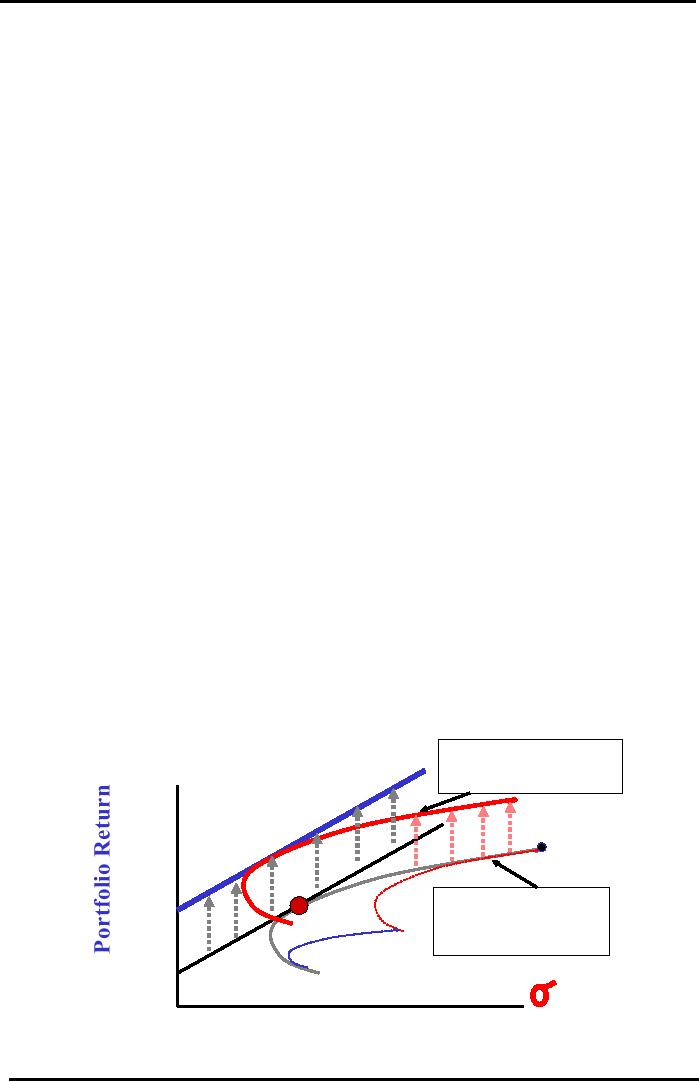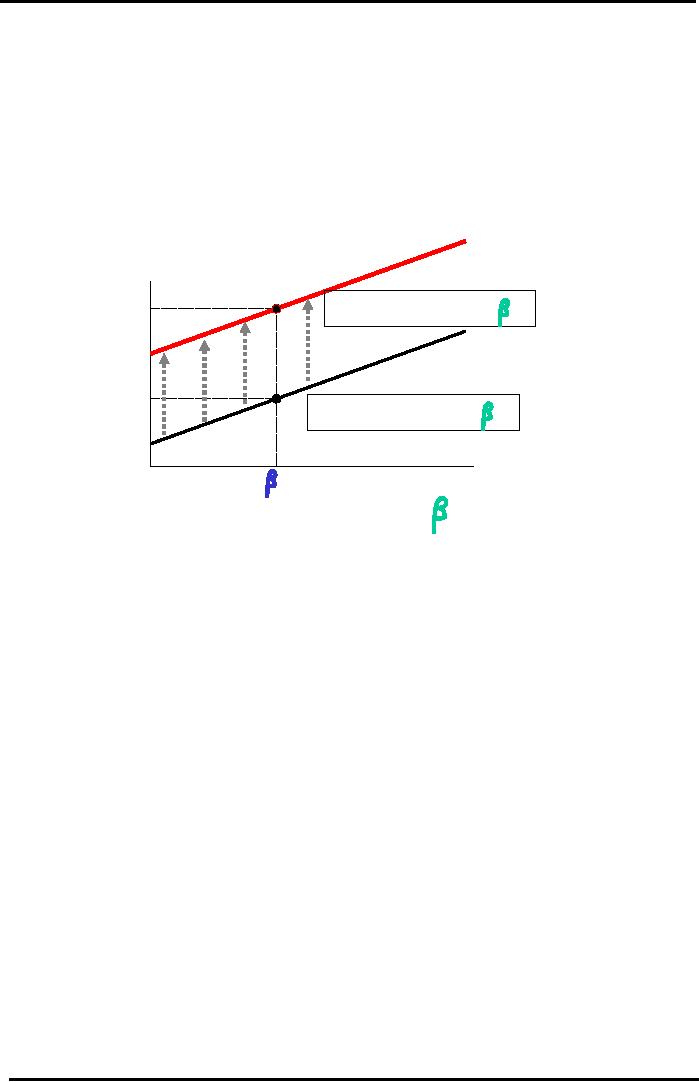 |

Financial
Management MGT201
VU
Lesson
44
INTERNATIONAL
FINANCE (MULTINATIONAL
FINANCE)
Learning
Objectives:
After
going through this lecture,
you would be able to have an
understanding of the following
topics:
�
International
Finance (Multinational Finance)
In
the lecture we shall cover three
areas of International
Finance:
�
Multinational
Finance
�
Impact
of Globalization and International Finance on
different areas of financial
management
like
capital budgeting, capital structure and
Capital asset pricing
model
�
Foreign
Exchange (F/x)
First
we discuss the first area of
Multinational Finance.
Issues
of International Finance:
�
All
Finance has become
International
Financial Markets (Money and
Capital Markets) of all countries
are Linked by hi-speed
telecom
satellite links, computer, and
Internet
Butterfly Effect "When
New York Stock Exchange
Sneezes, the Tokyo
Stock
Exchange
catches a cold". It explains
the impact of capital
markets that are linked
all
over
the world. As all the financial
markets over the world are
linked due to
international
flow of money and international trade
and transactions. So any change
in
one
part of the world has its
affects on the other part of the
world.
�
All
Firms affected by International
Factors
Even 100% Domestic Firm is
affected by International Finance because
it competes
with
Importers and Foreign Franchises
substitutes and competing products whose
prices
change
with Foreign Exchange
Rate.
�
2
Fundamental Flows Determine a Country's Foreign
Exchange Rate
International Flow or Trade of Real
Physical Goods:
Trade
Surplus / Deficit = Imports -
Exports
International Flow of Capital or
Money Balance of Payments
(BOP)
=
Current Account + Capital
Account + Foreign Exchange Reserves.
Current
Account
includes
Trade of Goods and Services.
Capital
Account measures
Capital coming in (FDI and
Portfolio Investment) and
Going
Out.
Domestic Macroeconomic Factors
affecting Foreign Exchange:
1)
Inflation
2)
Fiscal Deficit (if government
expenditures exceed their
revenues through taxes
etc.)
Why
do Multinationals Do Business
Internationally?
To Expand Market Share:
USA and EU are about $ 10
Trillion Economies Each.
And
each
has about 300 million
people.
Get Closer to End Users /
Consumers i.e. Toyota of
Japan in USA
Lower Production Costs,
Shipping Costs, Raw Material
Costs i.e. British BAT
Tobacco
in
NWFP, Union Texas in
Badin
Bypass Trade Barriers
and Import Tariffs i.e.
Pakistanis set up textile units in
Srilanka,
UAE
and Mexico to legally bypass US
Textile quota for exports
from Pakistan.
Diversify and Reduce
Sovereign (Country-Specific Political)
Risk
�
Portfolio of Subsidiary Companies,
Divisions, Projects, Investments
diversified
across
different countries can reduce the
Sovereign (or
Country-Specific
Political)
Risk
�
Manage Foreign Exchange Rate
Exposure. If your home currency is very
weak
or
Depreciating (because of Inflation,
Deficits, Political Turmoil
etc. ) then
invest
abroad
�
Take advantage of Lower Costs of
Debt (interest rates) in
foreign countries or
lower
Taxes.
179

Financial
Management MGT201
VU
Major
Issues Faced by
Multinationals:
Foreign Exchange Risk i.e.
Turkish Lira, Russian Ruble.
Caused by Unexpectedly
high
Inflation,
Deficits, and Political Turmoil
etc.
Sovereign and Political Risk
i.e. South Africa,
Afghanistan, Rwanda - risk of War,
Civil
Unrest
Different Laws Business
Contract, Property, Companies, Capital
Flow & Different
Tax
Rates,
Different Government Involvement,
and Different Maturity of
Financial Markets
�
Saudi Arabia (Restricted property
rights)
�
USA (strict Monopoly
laws) vs. Bahamas (Lenient
Laws and Tax)
�
Japan (MITI supports Japanese
exporters abroad)
Different Cultures, Customer
Awareness about their rights
and Quality
Standards,
Credit
Cultures, and Business Practices and
Ethics
�
Japanese Kereitsu (Bank is
Business Partner and Shareholder) so in
Japan large
companies
like Sony have large of debt
in their capital.
�
Korean Chaebols (Conglomerates with
Monopoly power)
�
German Consumer Standards
�
Business Ethics i.e. Nigeria
vs. Singapore
�
Central Asia (Barter economy and
Long Credit Cycle)
Now
we move to the second area of
today discussion:
International
Financial Management:
�
International
Diversification
Bruno Solnik: These
two persons analyzed
INTERNATIONAL Portfolio of 20
Stocks
has
HALF as much risk as same
portfolio containing stocks of
just 1 country.
�
International
CAPM Model for Integrated
Global Market
r
P =
r RF + Beta (r W
- r RF )
r W is
the WORLD MARKET Required
Rate of Return expected by all investors
all
over
the world
Assets are priced in
LOCAL (or SEGMENTED) MARKETS
so if an Investor can
diversify
internationally, then he may
attain RISK-RETURN above the Local
Market
Capital
Market Line.
Global Efficient Frontier
(for Investment in World
Markets) offers higher
Risk-Return
combinations
than Local Segmented Market
Efficient Frontier.
Global
Investing Makes the
Efficient Frontier and
the
CML
(Capital Market Line) Rise
Up
Higher
Return for Same Level of
Risk
Efficient
Frontier (for
)
rP*
nts
Global
Investments)
e
stm
ve
In
al
s)
b
ent
lo
rG
tm
ves
(fo
In
L
y
ntr
CM
u
o
le
C
Efficient
Frontier
g
Sin
(for
Investment in
for
rRF
(
ML
Single
Country)
C
P
Risk
180

Financial
Management MGT201
VU
�
International
Corporate Financing
Raise capital in the country where
you can get the best price
and yield.
Euro equities Example
ADR's (American Depository receipts):
Non-US firms can be
listed
and traded on the NASDAQ Stock Exchange in
USA. So Pakistani firms
can
raise
equity capital in America.
Foreign firms can also be
listed on Luxembourg stock
exchange
to raise Equity capital in
Euro currency.
Eurobonds: Currency of bond
issue is different from the
country of issue.
Example:
Pakistani
company selling US$-denominated Bonds in
Luxembourg can raise
Debt
capital
in Euro currency.
�
International
Capital Budgeting
PV
= CF 1 / (1+r) + CF 2 / (1+r) 2
+ CF 3 /
(1+r) 3
+ ...
CF or Cash Flows in foreign
countries need to be converted into the
Home Currency of
the
Investor (or country where
Head Office is
located).
�
Transfer Pricing, Royalties, and
Foreign Country's Inflation
affect forecast of
cash
flows
�
Opportunity Cost of Foreign
Funds Blocked because of Remittance
Restriction
�
Different taxes in different
countries. Tax on Remitted
Income.
Discount rate "r"
�
Discount the foreign cash
flows in the nominal foreign
currency discount rate.
Then
convert the PV in foreign currency to
home currency.
�
Use High Discount Rate
if High Level of Country -
specific Political or
Sovereign
Risk
�
Impact of Concessionary Financing
can affect choice of "r"
�
International
Accounting Standards
Profit & Loss Statement
(or Income Statement) Convert
foreign expenses and
revenues
at the AVERAGE F/x Rate
prevailing during the Accounting
Period.
Balance Sheet Foreign FIXED
(Non-Financial) Asset values converted
at
HISTORICAL
F/x Rate prevailing at the
time of purchase. But,
Foreign FINANCIAL
Assets
converted at AVERAGE F/x
Rate prevailing during the
Accounting Period.
Foreign
Exchange Rate:
�
Currencies, like Goods, are bought
and sold in markets. The
price of a currency increases if
the
financial,
economic, and political health of that
Country becomes stronger.
Like price of cotton
from
Pakistan which is different from
China and Egypt and changes
with quality and
Supply/Demand.
�
Currencies or F/x are traded in
International F/x Markets
which is the largest Financial
Market
of
all with trading in
Trillions of Dollars. Banks, Firms, and
Individuals can trade in
Virtual
Electronic
F/x Markets from their
computer 24-hours a day. F/x rates
are changing every
second!
�
The Demand / Supply of F/x
affect the Value of the
Currency.
�
3 F/x Markets:
F/x Spot Market : "Current"
exchange rate for Delivery
within 2 Days
F/x Forwards Market: Make contract
today for Delivery in
future. Forward Price
Determined
by Interest Rate Yield Curve
and Spot Rate. Contract size and
delivery
date
negotiated privately with
banks.
F/x Futures Market: Derivative
securities whose value is derived
from Forward prices
and
"Mark-to-market" risk premium
for meeting minimum balance in
Margin Account
for
trading. Tradable in Exchanges
because of Standardized contract size and
fixed
future
delivery dates.
F/x Options Market:
Derivative securities. Spot Option values
derived from Spot
F/x
Rate.
Future Option values derived
from Futures F/x Rate.
Options (unlike Forwards
and
Futures) are not obligations. It is
cheaper to buy an Option to
buy a house than to
buy
the house! Same for F/x.
Also, you can decide not to
buy and let the option
expire.
181

Financial
Management MGT201
VU
�
Call
Option Right to Buy something at a
fixed Strike Price for a
limited time
in
the future
�
Put
Option Right to Sell something at a
fixed Strike Price for a
limited time in
the
future
�
Valuation
or Pricing of Options using
famous BLACK & SCHOLES
MODEL
or
simpler Binomial
Model
Relationship
between Foreign Exchange Rate, Interest Rate &
Inflation Rate:
�
Spot F/x Rate of 2 Countries
determined by Prices of Real
Goods:
Relative Prices of Same
Good Purchasing Power Parity Theorem
(PPP)
�
Spot price (Rs. / US$) = Price
(Pak) / Price (USA)
�
Example: Use Price of Levis
Jeans made in Pakistan and
USA to estimate the
theoretical
Spot F/x Rate. Price of Levis
501 is US$50 in USA and Rs.3100
in
Pakistan
so the Estimated Spot F/x Rate = S (Rs. /
US$) = Rs.3100 / US$50 =
Rs.62
/ US$1. This is close to the actual Spot
F/x rate in range of Rs.50-60.
�
Nominal Interest Rate
determined by Expected Inflation.
Relative Expected Inflation Rates (
g ) Fischer Effect
�
(1+ i Rs.)
/ (1+ i US$ )
= (1+ g Pak )
/ (1+g USA )
�
Forward F/x Rate
determined by Interest Rate
Yield Curve
Relative Interest Rates ( i ) -
Interest Rate Parity Theorem
(IRP)
�
F (Rs. /US$) / S (Rs.
/US$)
=
(1+ i RS)
/ (1+ i US$)
�
Example: Use 1 Year Estimate of
Interest Rates in Pakistan and USA
to
estimate
the 1 Year Forward F/x Rate.
Using Yield Curves, you know
that the
interest
on 1 Year Maturity in Pakistan is 10% and
in USA 2%. You know
that
the
current (or Spot) Rate is
Rs.60/US$1. So, the 1 Year
Forward Rate
=
F = S (Rs. /US$) (1+ i Rs.)
/ (1+ i US$)
=
(60) (1+0.1) /
(1+0.02)
=
Rs.64.7 / US$1.
In
other words, we have forecasted the F/x
Rate after 1 Year.
�
2 Conventions for Quotation of
F/x Rates used by Banks and
F/x Dealers:
American: US$ / FCY
i.e. US$0.9 / 1Euro (means
"Bid US$ 0.9 / Ask 1
Euro")
European: FCY / US$
i.e. JY100 / US$1, Rs.60 /
US$1.
Inverse Relationship: European = 1 /
American. So, Japanese
Yen (JY) under
American
Convention = 1 / 100 = US$0.01 /
1JY. Commonly written as
1.000.
In
Pakistan generally we follow European
convention.
�
PAIR
of Market Prices for Every
Currency in the F/x
Market
BID Rate = Buying Price for
Currency. Example: Bid Rs.60
/ US$1
Means
Bank
or
Money Changer will Buy (or
Bid) one US$ from you
for Rs.60. This also
means that
you
(the Customer) are Selling
Dollar to the Bank. Bid
Rs.60 / US$1 means Bid
Rs60 /
Ask
US$1
ASK Rate = Selling Price
for Currency. Example Ask
Rs.61 / US$1 Means Bank
or
Money
Changer will Sell (or Ask)
one US$ to you for Rs.61.
This also means that
you
(the
Customer) are Buying Dollar
from the Bank. Ex. If you
are going to travel
abroad
to
USA.
Fundamental Principle for F/x
Traders and "Money Changers": Buy
Low and Sell
High.
So, ASK > BID
Rate.
Standard Quotation Format: Bid
Rate / Ask Rate.
�
Ex 1. "US$ 60/61" means
Money Changer will Buy 1 US$
from you (the
customer)
for Rs.60 BUT they
will Sell 1 US$ to you
for Rs.61. Means a
Profit
of
Rs.1 for every US$
traded!
�
Ex2. If you see only 1
Quote i.e. "US$ 60" then it
generally refers to the
Bid
Quote
i.e. Bid Rs60 /
US$1.
�
Cross
Rates (Transitivity of F/x
Rates)
182

Financial
Management MGT201
VU
Example
with Either Bid OR Ask
Rates: Suppose you want to
convert your Euros
into
US
Dollars in Pakistan and you need to
estimate the E/US$ F/x rate.
Money Changers
and
Banks in Pakistan show Spot F/x Rates in
Rupee-Terms: Rs.60 / 1US$
and Rs.55 /
1Euro.
Then Spot US$ / Euro = ( US$
/ Rs. ) x ( Rs. / Euro) = (
1US$ / Rs. 60) x
(
Rs55 / 1 Euro) = US$ 0.9167
/ 1Euro
If
you are given Both
Bid and Ask Rates,
then Estimate the Cross Rate
RANGE.
�
Bid Euro / Ask US$
< ( Bid Euro / Ask Rs. )
x ( Bid Rs. / Ask
US$)
�
Ask Euro / Bid US$
> (Ask Euro / Bid Rs.) x
( Ask Rs. / Bid
US$)
Global
Investments
Make
SML (for Efficient Stocks)
Rise Up
Higher
Return for Same Level of
Risk
Required
nt)
Return
(r*)
tme
s
Inve
rW (Global
l
rA =
rRF +
(rW -
rRF )
.
oba
l
A
L
(G
Market)
SM
ent)
estm
rRF (Global
v
y
In
untr
Market)
Co
le
rM (Single
Sing
L(
rA =
rRF +
(rM -
rRF )
.
Market)
SM
A
rRF (Single
Market)
M
=+
1.0
Beta
Risk (
)
183
Table of Contents:
- INTRODUCTION TO FINANCIAL MANAGEMENT:Corporate Financing & Capital Structure,
- OBJECTIVES OF FINANCIAL MANAGEMENT, FINANCIAL ASSETS AND FINANCIAL MARKETS:Real Assets, Bond
- ANALYSIS OF FINANCIAL STATEMENTS:Basic Financial Statements, Profit & Loss account or Income Statement
- TIME VALUE OF MONEY:Discounting & Net Present Value (NPV), Interest Theory
- FINANCIAL FORECASTING AND FINANCIAL PLANNING:Planning Documents, Drawback of Percent of Sales Method
- PRESENT VALUE AND DISCOUNTING:Interest Rates for Discounting Calculations
- DISCOUNTING CASH FLOW ANALYSIS, ANNUITIES AND PERPETUITIES:Multiple Compounding
- CAPITAL BUDGETING AND CAPITAL BUDGETING TECHNIQUES:Techniques of capital budgeting, Pay back period
- NET PRESENT VALUE (NPV) AND INTERNAL RATE OF RETURN (IRR):RANKING TWO DIFFERENT INVESTMENTS
- PROJECT CASH FLOWS, PROJECT TIMING, COMPARING PROJECTS, AND MODIFIED INTERNAL RATE OF RETURN (MIRR)
- SOME SPECIAL AREAS OF CAPITAL BUDGETING:SOME SPECIAL AREAS OF CAPITAL BUDGETING, SOME SPECIAL AREAS OF CAPITAL BUDGETING
- CAPITAL RATIONING AND INTERPRETATION OF IRR AND NPV WITH LIMITED CAPITAL.:Types of Problems in Capital Rationing
- BONDS AND CLASSIFICATION OF BONDS:Textile Weaving Factory Case Study, Characteristics of bonds, Convertible Bonds
- BONDS’ VALUATION:Long Bond - Risk Theory, Bond Portfolio Theory, Interest Rate Tradeoff
- BONDS VALUATION AND YIELD ON BONDS:Present Value formula for the bond
- INTRODUCTION TO STOCKS AND STOCK VALUATION:Share Concept, Finite Investment
- COMMON STOCK PRICING AND DIVIDEND GROWTH MODELS:Preferred Stock, Perpetual Investment
- COMMON STOCKS – RATE OF RETURN AND EPS PRICING MODEL:Earnings per Share (EPS) Pricing Model
- INTRODUCTION TO RISK, RISK AND RETURN FOR A SINGLE STOCK INVESTMENT:Diversifiable Risk, Diversification
- RISK FOR A SINGLE STOCK INVESTMENT, PROBABILITY GRAPHS AND COEFFICIENT OF VARIATION
- 2- STOCK PORTFOLIO THEORY, RISK AND EXPECTED RETURN:Diversification, Definition of Terms
- PORTFOLIO RISK ANALYSIS AND EFFICIENT PORTFOLIO MAPS
- EFFICIENT PORTFOLIOS, MARKET RISK AND CAPITAL MARKET LINE (CML):Market Risk & Portfolio Theory
- STOCK BETA, PORTFOLIO BETA AND INTRODUCTION TO SECURITY MARKET LINE:MARKET, Calculating Portfolio Beta
- STOCK BETAS &RISK, SML& RETURN AND STOCK PRICES IN EFFICIENT MARKS:Interpretation of Result
- SML GRAPH AND CAPITAL ASSET PRICING MODEL:NPV Calculations & Capital Budgeting
- RISK AND PORTFOLIO THEORY, CAPM, CRITICISM OF CAPM AND APPLICATION OF RISK THEORY:Think Out of the Box
- INTRODUCTION TO DEBT, EFFICIENT MARKETS AND COST OF CAPITAL:Real Assets Markets, Debt vs. Equity
- WEIGHTED AVERAGE COST OF CAPITAL (WACC):Summary of Formulas
- BUSINESS RISK FACED BY FIRM, OPERATING LEVERAGE, BREAK EVEN POINT& RETURN ON EQUITY
- OPERATING LEVERAGE, FINANCIAL LEVERAGE, ROE, BREAK EVEN POINT AND BUSINESS RISK
- FINANCIAL LEVERAGE AND CAPITAL STRUCTURE:Capital Structure Theory
- MODIFICATIONS IN MILLAR MODIGLIANI CAPITAL STRUCTURE THEORY:Modified MM - With Bankruptcy Cost
- APPLICATION OF MILLER MODIGLIANI AND OTHER CAPITAL STRUCTURE THEORIES:Problem of the theory
- NET INCOME AND TAX SHIELD APPROACHES TO WACC:Traditionalists -Real Markets Example
- MANAGEMENT OF CAPITAL STRUCTURE:Practical Capital Structure Management
- DIVIDEND PAYOUT:Other Factors Affecting Dividend Policy, Residual Dividend Model
- APPLICATION OF RESIDUAL DIVIDEND MODEL:Dividend Payout Procedure, Dividend Schemes for Optimizing Share Price
- WORKING CAPITAL MANAGEMENT:Impact of working capital on Firm Value, Monthly Cash Budget
- CASH MANAGEMENT AND WORKING CAPITAL FINANCING:Inventory Management, Accounts Receivables Management:
- SHORT TERM FINANCING, LONG TERM FINANCING AND LEASE FINANCING:
- LEASE FINANCING AND TYPES OF LEASE FINANCING:Sale & Lease-Back, Lease Analyses & Calculations
- MERGERS AND ACQUISITIONS:Leveraged Buy-Outs (LBO’s), Mergers - Good or Bad?
- INTERNATIONAL FINANCE (MULTINATIONAL FINANCE):Major Issues Faced by Multinationals
- FINAL REVIEW OF ENTIRE COURSE ON FINANCIAL MANAGEMENT:Financial Statements and Ratios